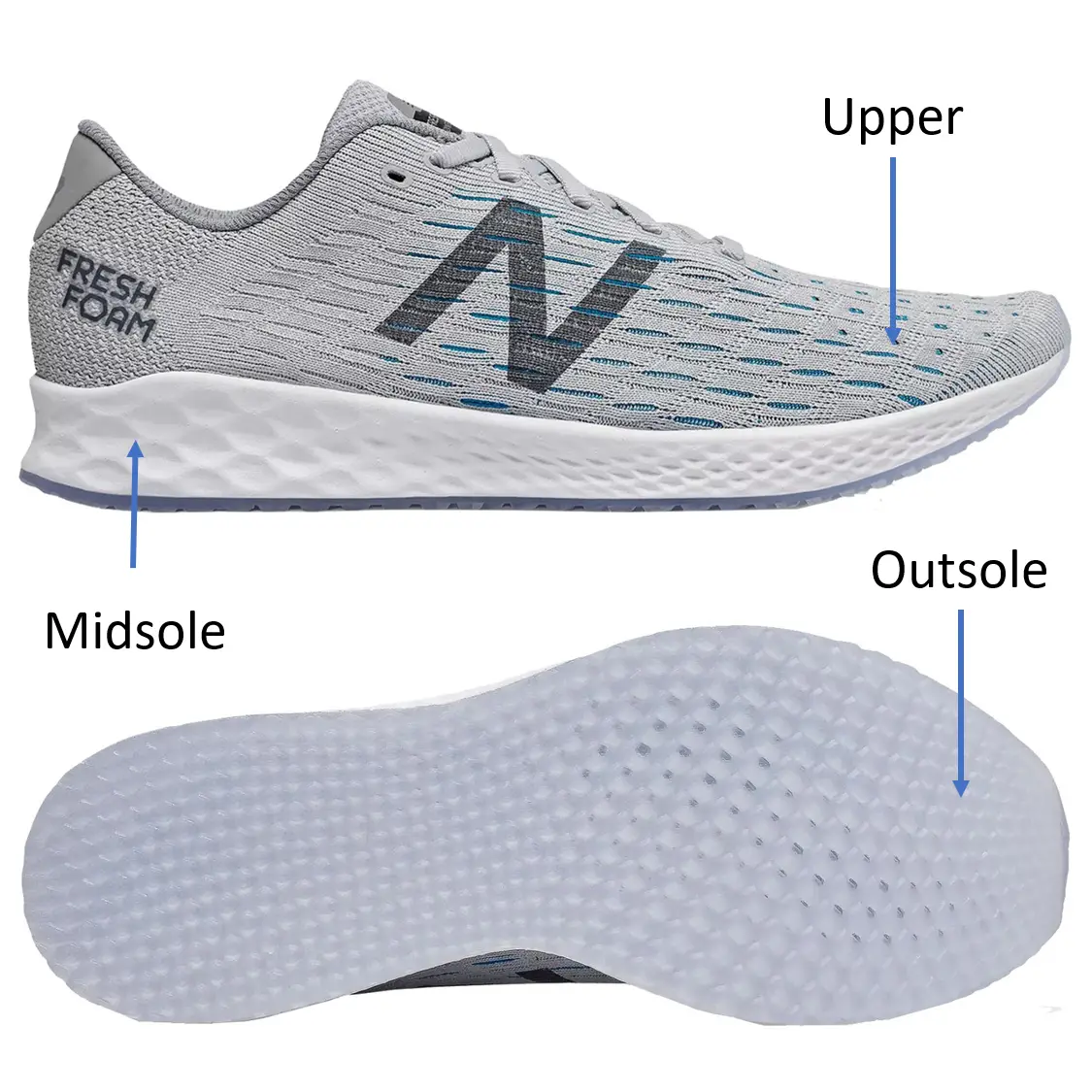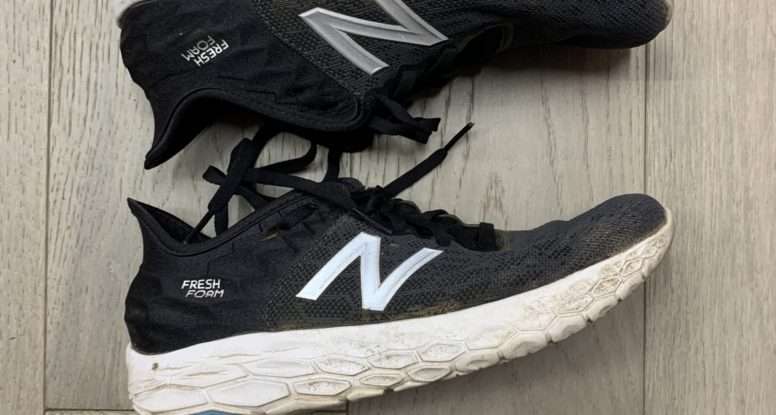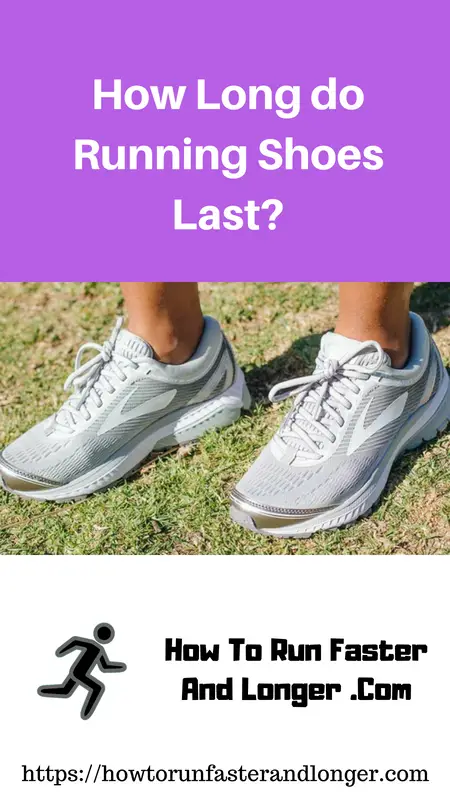Signs You Should Replace Your Running Shoes
It’s not a matter of time, but a matter of miles.
Whether you’re training for a 5K or an ultramarathon, you’ll need a trusty pair of running shoes that will take you to the finish. Part of a successful training cycle and pain-free race day is making sure your running shoes aren’t too worn out. Studies show that worn-down shoes cause runners to change their posture and gait , which can lead to injuries down the line. This is largely due to a .
Sometimes it’s hard to give up a favorite pair of old shoes, but when they start to hurt more than they help, remember it’s for the sake of your health.
How Should Running Shoes Fit
As a general rule, we recommend having half to one thumbs width of space in front of your toes. Most peoples feet will swell over the course of a run due to greater levels of blood flow to the area. The slight swelling moves your toes closer to the end of the shoe. This can then make them feel uncomfortable and bruise toenails which causes them to go black. Having some space is often the most comfortable way to wear running shoes. Which may mean going half to a full size up from your standard shoe size.
Look Out For Excessive Wear
Excessive wear on the outsole can be a good indicator your shoes are worn down. This should last longer than the midsole cushioning. If the outsole is worn completely away its unlikely youll be getting much cushioning. In saying that, there are of course variances to this. Some models mix the outsole rubber into the midsole material and lightweight models can have very small amounts added. Its possible to see quite a lot of wear on an outsole but the midsole will still have a lot of life left in it. This is just the nature of some shoes and wont necessarily compromise performance.
Checking the miles in this case is the best way to assess. Bear in mind that some models will be at the lower end of the scale. Variances in foot strikes, even between each leg, and where a runner lands in a shoe will also affect wear patterns. So again, its very possible that two runners will see completely different wear patterns on the same model depending on how they run.
Read Also: Can I Wear Steel Toe Boots On A Plane
Is It Bad To Wear The Same Shoes Every Day
Wearing the same shoes every day can make them expire faster. Its good to give them a break and switch to another pair on some days. This allows your footwear to bounce back and minimize extensive compression.
Another pro of rotating your shoes is that you give them time to dry out. Sweat can cause the materials to deteriorate faster, so leaving them in the shade for a day or two to air out is beneficial.
Watch this video for a more in-depth explanation as to why you shouldnt wear the same shoes every day.
What Happens As Running Shoes Wear Out

Focus on how your shoes feel and pay attention to changes over time. If your once-trusty pair leaves your legs or feet noticeably tired after each run , it may be that the cushioning has lost shock absorption.
If your shoes start to fit differently than they did out of the box, thats also a sign theyre ready for retirement. The materials have likely stretched or worn down. And dont discount a vague sense that the ride feels different. Thats grounds for replacement, too.
Read Also: Sell Shoes Online Fast
How Long Will My Running Shoes Last
There’s no one-size-fits-all answer to the question of how long your running shoes will last. That’s because it depends on your individual running style, the type of terrain you’re running on, how often you run, and the design of the running shoe. Even your weight and foot type can affect how quickly your shoes wear out.
Most experts agree that running shoes should be replaced every 300 to 500 miles. After that, most shoes will lose the resiliency of their midsole cushioning which means less shock absorption and more impact on your joints and muscles as you run.
If you track your runs with a fitness app, it’s easy to know when youve hit 300 miles then you’ll know it’s time to start paying closer attention to how your shoes feel as you run. If you run an average of 15 miles a week, this means you’ll probably need to replace them somewhere in the five- to eight-month time frame.
However, not everyone is going to keep track of their mileage that closely, so you’ll want to learn other ways to determine if your shoes are ready to be retired.
Giving your shoes a quick inspection once a month or so can help you see signs of wear and give you the chance to start shopping for a new pair before they put you at risk of injury. Some of the tell-tale signs that your running shoes will need to be replaced soon are:
Some of the most common injuries caused by worn-out running shoes are:
1. Plantar fasciitis, which causes pain in the heel and arch of the foot
Youve Logged Too Many Miles On Them
Most shoe manufacturers suggest 300 to 400 miles for any given pair of trainers. While we can assume they shoot on the lower end of the spectrum , shoes are generally good for 350 to 500 miles. Each step in your shoe will compress the foam in the midsole and, after enough miles, the foam starts to decompress less and less to the point where its not supporting you as much as it did. Shoes become less effective at absorbing impact and leave you more prone to stress and impact injuries.
The 350 to 500 mile range is admittedly pretty broad some certainly stand the test of time a bit better than others. I suggest thinking about getting a new shoe to rotate in with at 250 to 300 miles so you dont end up in a dead or dying shoe for over 100 miles.
Don’t Miss: Is Dhgate Legit For Shoes
Allow Your Shoes Time To Recover
Foams, believe it or not, recover in between uses. The foams will rise back up again between when youve worn them. Longer periods between use will help the recovery. I run in my shoes and then take them off as soon as Im finished. By only using them for my runs, they last longer. Ill never finish a run and then stand around in them as itll break them down faster.
Matching the purpose of the shoe to the purpose of the run will help you get the most out of your training and help improve your run.
How Long Do Trail Running Shoes Last
Just like other shoes, trail running shoes are tough but they are not built to last forever. Since trail running is twice more challenging than flat surface road running, it could cause trail running shoes to be worn out a bit sooner.
However, trail running shoes are specialized shoes meant for trail running, which sometimes involves mountain running or fell running. Therefore, these shoes are designed to be durable, adaptable, supportive, versatile, and comfortable.
So, how long do these shoes last? An excellent pair of trail running shoes could last for 480 to 800 kilometers or 300 to 500 miles of total running distance. But of course, this varies per trail runner as there are many factors that need to be taken into consideration when determining the life span of trail running shoes.
You May Like: How To Clean My Hey Dude Shoes
According To Shoe Manufacturers
Most shoe manufacturers recommend getting new shoes every 200-500 miles. Thats quite a range!
Many factors impact how quickly your shoes wear out, in addition to the miles you put on them. The quality of the materials, the terrain you run on, your weight and foot shape, among other things, impact the lifespan of your shoes.
When You Have Bought New Shoes
In the Progress Tab in your Runtastic app, youll find My Shoes at the bottom. From here you can click on Manage Shoes and then Add in the upper right corner. If you cant find your shoe, you can always add a new model plus a photograph of your shoe. After you finish an activity, you can specify which shoe you ran with. The kilometers ran will then be assigned to this shoe. Oh, and you can also give your shoe a unique name!
Also Check: What Does 4e Mean In Shoe Size
Why Do We Need To Replace Running Shoes
Other than good running shoes being one of Brad Beers 5 Steps to Injury Free Running, your running shoes are a critical part of your running form.
While most of the visible wear to a shoe occurs on the upper fabric and the outsole, the hard rubber bottom of a running shoe, the wear that most affects biomechanics occurs inside the midsole.
The midsole is the thick layer of EVA foam that cushions impact and, in some cases, is designed to modulate your foot mechanics. Many shoes have a dual density midsole, denoted by a gray block of denser foam under the arch. This medial wedge, as it is called in the shoe industry, is designed to resist pronation.
While EVA foam is quite resilient, research shows that it still breaks down over the course of thousands of footstrikes.
How Long Do Shoes Last The Answer Might Surprise You

- ,Q& A
Replacing your footwear often is essential for obtaining optimal foot health. However, many of us are guilty of wearing a pair of shoes that are way past their expiration date.
This is often down to a lack of awareness regarding the problems with worn-out footwear. Hence, today, were answering the question: How long do shoes last?
Here are some signs that you should replace your shoes:
- Upper and interior wear.
Read Also: How To Do A Raffle For Shoes
The Lifespan Of Your Running Shoes All Depends On Exactly How You Run
Log enough miles in them, and youre bound to get attached to your running shoes. Whether theyve carried you through stunning landscapes, allowed you to forge friendships on the fly, or kept you company as you solved problems or chased goals, theyre an integral part of every running journey. If youre sentimental at all, parting, when its time, can be hard.
As a professional marathon runner, I go through 15-20 pairs of shoes each year. And whether theyre lightweight trainers, dedicated recovery shoes, or sleek racing flats, I still get attached. But I also know how important it is to discern when a pairs time is up. The biggest concern is that worn-out shoes can lead to overuse injuries like shin splints, Achilles tendinopathy, and plantar fasciitis, which come on slowly but can lead to bigger problems and derailed plans if not attended to right away.
Here are some ways to get the most out of your running shoes without pushing them past their prime:
How Long Do Running Shoes Last On Treadmill
Well, as we all know, a treadmill is gentler on shoes. The surface of a treadmill is less abrasive, and thats why the outsole lasts longer. Also, the added cushioning decreases the compaction rate of the cushioning of the shoes. The only probable negative is that because steps are more consistent, the wear may be prominent in specific areas.
So for treadmill running, you should wear running shoes with flat outsoles. This is because you dont need good traction on a smooth and consistent surface. But at the same time, running in old or worn-out shoes can lead to injuries and discomfort. Over time, with running on a treadmill, your running shoes lose shock absorption and stability.
Whats more, when you run in worn-out shoes, it increases stress and impact on your legs and joints, which can cause serious injuries. So one of the best things you can do to prevent injuries is to replace your shoes at the right time.
Also Check: How To Clean Cariuma Shoes
When To Replace Your Running Shoes
Your trusty pair of running shoes have been there for you through all the happy miles, and the hard ones, too, which can make parting ways tough. But eventually the day will come when your shoes will have reached their ultimate finish line knowing when to set them aside and lace up a new pair is important to your running performance and comfort.
You should generally replace your running shoes every 300500 miles. Thats because its around this point that the midsole cushioning on most shoes will lose resiliency and stop absorbing shock as well as when newer, which can cause more impact on your muscles and joints. This means that if you average 15 miles of running per week, then youll need to replace your shoes approximately every five to eight months.
Tricks To Make Your Shoes Last Longer
In the interest of athletic performance and injury prevention, its for the best that runners dont keep wearing a shoe well past its prime. But everyone wants to get their moneys worth out of good gearand if were honest, it can be tough to retire a pair that have fond memories tied to them. To that end, there are a few simple ways to make your favorite kicks last a bit longer.
Recommended Reading: Is Dhgate Trusted
Save Your Shoes Only For Exercise
Dont wear them all day slip into them only for your exercise time. If you keep them on your feet, they get more wear and they have longer exposure to foot moisture and bacteria, which will break them down faster. So, save your running or walking shoes for exercise. Only try not to wear them around town, as they will wear down faster.
Gone But Not Forgotten
Thanks to some great running apps such as Strava, you can record what shoe you are using on your runs. This serves the dual purpose of being able to look back and know just what pair it was you had on when you beat that PB or ran in a certain race, as well as tracking better just how far you have run on the shoes. Finding out just how far you may have come on your current running pair of shoes may surprise you, so apps come in very handy – especially when you start a new challenge such as, for example, running 1000km in a month for the very first time …
You May Like: How To Clean White Sneakers Nike
Can You Make Your Running Shoes Last Longer
Eventually, even the best shoes wear out, and youll have to call it quits. But you can prolong the magic by taking good care of them while youre together.
First, use your running shoes only for running. Walking or standing for long periods, gym training, and other activities involving lateral motion create an unusual wear pattern which breaks down the shoes faster. Performance running shoes are designed for one thing, and theyll have the longest life if thats all they do.
Also, while we dont generally recommend dishonesty, we do suggest cheating on your favorite trainers. Keep two pairs in rotation, and alternate so you never do consecutive runs in the same shoes. Youll allow time for each pair to completely dry and the cushion to reset between runs.
And on the note of drying: make sure you give your shoes some TLC after a rainy day. If you run in a downpour, through puddles, or in some other condition that soaks or submerges your shoes, take a few minutes to stuff them with newspaper and leave them in a warm place overnight. Avoid heat , as it can ruin the synthetic materials in the upper.
Try not to soak them, and just clean the surface. Stuff shoes with newspaper and allow to air dry. Voila. Squeaky clean .
Try not to soak them, and just clean the surface. Stuff shoes with newspaper and allow to air dry. Voila. Squeaky clean . Learn more about cleaning your shoes here.
Take it for a 90-day trial run. If youre not happy, were not happy.
Shock Absorption Is Limited As Shoes Get Older

In a fairly old study, Cook, Kester, and Brunet at Tulane University examined the degradation in mechanical shock absorption in a variety of different shoes.1
First, using a running machine which simulated the impact associated with running hundreds of miles in a pair of shoes, the researchers tested in a controlled way how the shock absorption changed over time.
Then, they compared these artificially worn shoes to shoes worn by actual runners over an equivalent volume of running.
In the machine-simulated running, shoes had decreased to 75% of their initial cushion after only 50 miles this cushioning dropped to 67% after 150 miles and ultimately to 60% after 500 miles.
The shoes worn by the real runners also declined in cushioning, following the same pattern of rapid decrease in cushion initially, tapering off and nearly leveling out at 500 miles of running.
But when worn by real runners, the shoes only dropped to 80% of their initial cushioninggood news for shoe-shoppers.
Heres something you probably want to know:
The researchers found no significant difference in wear properties amongst many different brands.
The Nike shoes deteriorated just as much as the Adidas or Brooks shoes, despite each shoe boasting different cushioning technology.
So much for a superior brand!
Finally, Cook et al. tested the decompression theory, which many runners have likely heard of.
Don’t Miss: Are Vessi Shoes Good For Hiking
